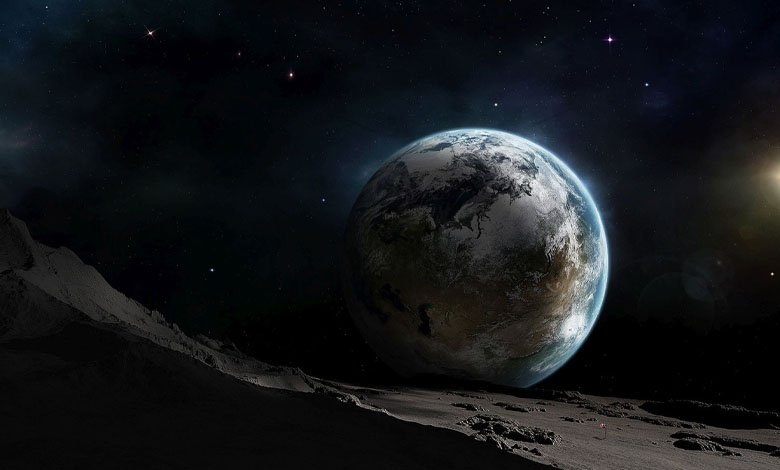Our Moon has been moving away from Earth for 2.5 billion years

By studying sedimentary layers, researchers have deduced valuable information about the distance between the Earth and the Moon. They showed that 2.46 billion years ago, our satellite was much closer to us, so that the days only lasted 17 hours!
In 1969, during the Apollo missions, a reflector was installed on the surface of our satellite with the aim of being able to measure the Earth-Moon distance using a laser. Since then, it has been found that the average distance between us increases by 3.8 cm each year. An effect due to the dissipation of the tides, especially in the oceans, which tends to move the Moon away from the Earth. But if this value of 3.8 cm is projected into the past, we arrive at an origin only 1.5 billion years ago. However, many studies, including a recent one relayed by Futura, show that the impact between Theia and the Earth occurred some 4.5 billion years ago. So something has changed in the orbit of the Moon! This is what researchers from the universities of Utrecht and Geneva have studied in a publication by PNASlooking at the clues of such an event on Earth.
Answers found in the alternation of sedimentary layers
For this, the team went to Australia, to Karinki National Park. At the bottom of some gorges in the park, there are ancient sedimentary layers, dating from 2.5 billion years ago. Called banded iron formations, they are made up of different minerals rich in iron and silica that come from the bottoms of ancient oceans. On these cliffs there is an alternation of layers of reddish iron almost a meter thick, with others much thinner and darker. An effect that comes from the climatic changes of our history, themselves caused by a variation of the orbital eccentricity of the Earth which changes the trajectory of our Planet around the Sun.
If we look even closer, a new pattern emerges: an alternation of white, reddish and then bluish-grey layers. This time, the researchers attributed these variations to the cycles of precession of the Earth, that is to say to the changes of direction of its axis of rotation. Together, these two successions of layers correspond to the Milankovitch cycles which account for major climatic changes based on three astronomical parameters: the eccentricity of the Earth, its obliquity (the angle between the plane of the ecliptic and the equator ), and the precession of the equinoxes, therefore the inclination of the axis of rotation of the Earth.
Depending on the values taken by these three parameters, the duration of the cycles varies between 400,000 years, 100,000 years, 41,000 years and 21,000 years. It is for this reason that ice ages do not occur on a regular basis. But above all, with each extreme climate change, all living things adapt, whether it be fauna or flora, because the temperature and humidity conditions change. But not only: the rocks and their deposits change, the distance between the Moon and the Earth also changes! More particularly, it stems from the precession parameter which fluctuates during a cycle of 21,000 years.
“This means that if we can first find Milankovitch cycles in old sediments, then find a signal of the Earth’s oscillation and establish its period, we can estimate the distance between the Earth and the Moon when the sediments were deposited, explain the authors in an article by The Conversation.
2.46 billion years ago, the days lasted 17 hours
That’s what they did! By combining the thicknesses of the layers with the rate of deposition of the sediments, they managed to date the rocks, and to evaluate the durations corresponding to these thicknesses: 11,000 years for the layers of 10 cm, and 100,000 for those of 85 cm. Values that testify to a precession cycle of the Earth of only 11,000 years, much shorter than the current one. However, this precession frequency is linked to the tidal forces between the Moon and the Earth, and between the Sun and the Earth. So, among other things to the distance between the Earth and the Moon! Thus, for it to last less long, the researchers concluded that the Moon was much closer to the Earth than it is currently.
Their calculation indicates a distance of 60,000 kilometers less than the Earth-Moon distance measured today. With such a distance, the rotation of the Earth on itself was faster, which implies shorter days, of only 17 hours according to the authors! A result which makes it possible to know more about the evolution of the Moon after its formation and which the researchers intend to dig, by setting out again in search of sedimentary rocks, carriers of our history. “We now need more reliable data and new modeling approaches to trace the evolution of the moon over time. And our research team has already started the hunt for the next suite of rocks that can help us uncover more clues to the history of the solar system,” they conclude.












